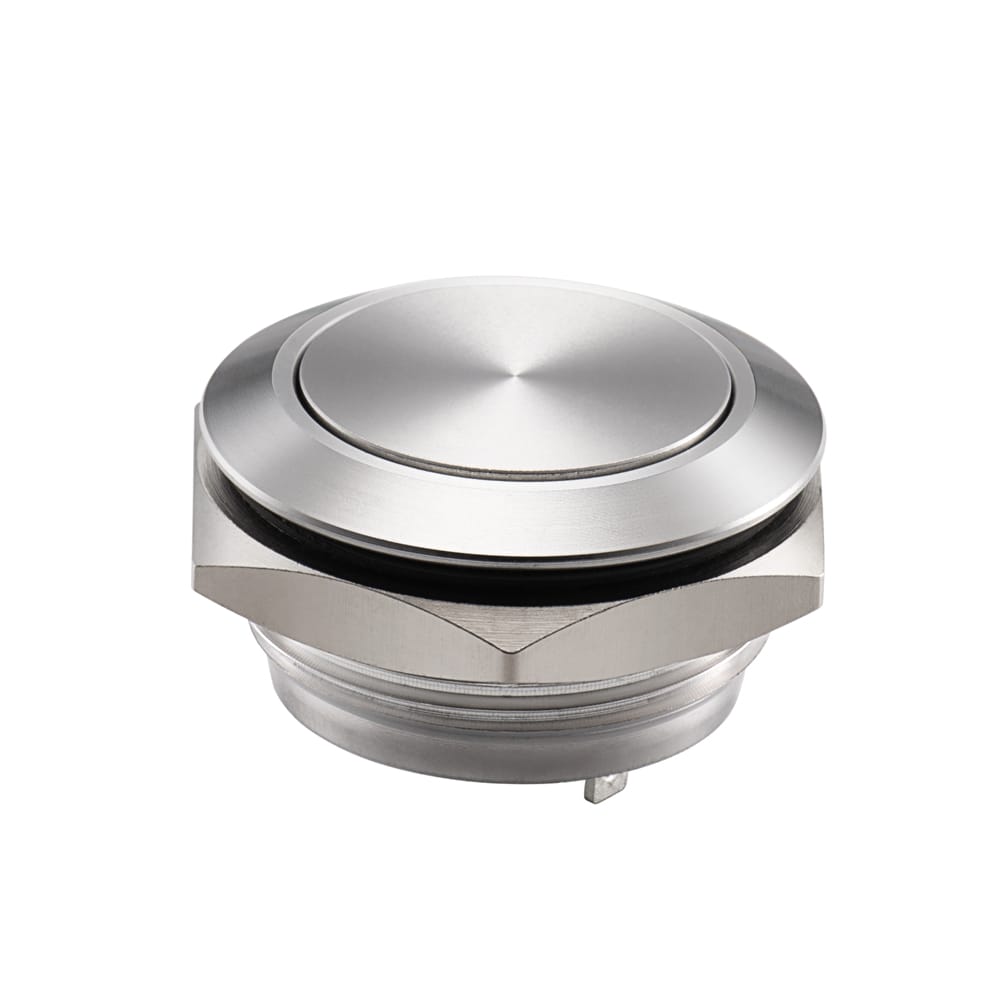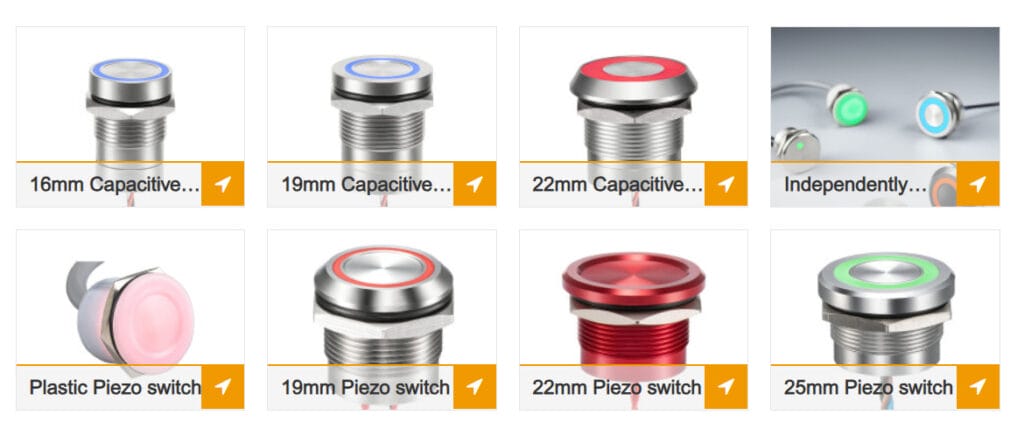
You may have seen various IP ratings on your electronics like smartphones, smartwatches, etc., and you must be wondering about their meaning. These numbers and letters – also known as the Ingress Protection (IP) ratings – inform you about the level of protection your device offers against dust and moisture, ensuring its durability and reliability in various conditions. Although multiple IP ratings are available, two commonly encountered classifications are IP67 and IP68. So, to better understand these IP ratings and their benefits, we have compiled a detailed comparison between IP67 Vs IP68 for you. Let’s dive in!
Understanding IP Rating
IP stands for “Ingress Protection,” and IP ratings tell you about how resistant a device is against solids and water. These ratings consist of two digits following the abbreviation “IP.” Each digit represents a specific level of protection against different types of intrusions. The first digit shows protection against solid objects, while the second digit shows protection against liquids. To interpret an IP rating, simply combine the first and second digits. For example, an IP65-rated device offers complete dust protection (6X) and can withstand high-pressure water jets of 12.5mm nozzle.
Typically, the purpose of IP ratings is to offer you complete surety about the safety of your electronics. Unlike vague marketing terms such as “waterproof,” which lack clarity, IP ratings provide specific and detailed information about a product’s durability.
They give a clear definition of where and to what extent an item can resist the ingress of moisture. In addition, this standardized system tells you that the products are adequately protected against dust, water, and other potential hazards and help you make an informed decision. Some examples of products with IP ratings are smartphones, smartwatches, laptops, etc. In IP67 Vs IP68, each letter has a different meaning. Let’s first discuss these letters and numbers to find the meanings behind them.
| First Number | Protection Against Solid Objects | Second Number | Protection Against Liquids |
| 0 | No protection against solid objects. | 0 | No protection against liquids. |
| 1 | Protection against solid objects larger than 50mm in diameter, such as the back of the hand. | 1 | Protection against vertically falling water drops, such as condensation. |
| 2 | Protection against solid objects larger than 12mm in diameter, such as fingers. | 2 | Protection against vertically falling water droplets when the enclosure is tilted or rotated to 15 degrees. |
| 3 | Protection against solid objects larger than 2.5mm in diameter, such as tools and wires. | 3 | Protection against spraying water at an angle up to 60 degrees from the vertical. |
| 4 | Protection against solid objects larger than 1mm in diameter, such as small tools and wires. | 4 | Protection against water splashes from any direction. |
| 5 | Partial protection against dust and other solid particles so that the internal components won’t be damaged. | 5 | Protection against low-pressure water jets (6.3mm) from any direction. |
| 6 | Full protection against dust and other particles that protect your device and its internal components. | 6 | Protection against high-pressure water jets (12.5mm nozzle) or heavy seas. |
| 7 | Protection against the effects of temporary immersion in water up to 1 meter for 30 minutes. | ||
| 8 | Protection against continuous immersion in water under specified conditions, typically at depths greater than 1 meter. | ||
| 9 | Protection against high-pressure, high-temperature water jets, typically used in industrial cleaning processes. |
Some common IP ratings are 65, 66, 67, and 68, and we’ll have a look at IP67 Vs IP68.
What is IP67 Waterproof Rating?
In IP67 Vs IP68, we’ll first discuss the former. An IP67 rating indicates a high level of protection offered by an electronic device or enclosure against the intrusion of solids and liquids. The first digit (6) in IP67 signifies complete protection against dust particles, ensuring no dust can penetrate the device. The second digit (7) tells the device’s ability to withstand immersion in water up to 1m deep for around 30 minutes without suffering damage.
However, it’s important to note that the IP67 rating does not cover protection against some other elements. These include extreme temperatures, or chemical exposure, which may require additional certifications or ratings.
Example of IP67 Rating
To better understand the comparison of IP67 Vs IP68, let’s discuss them with examples. Here’s the switch that’s IP67 rated and serves as an incredible control panel switch for various devices:
What is IP68 Waterproof Rating?
The next one to discuss in IP67 Vs IP68 is the IP68 rating. The IP68 waterproof rating is another IP rating, and it’s higher than the IP67 waterproof rating. The “6” in IP68 indicates that the device is completely dustproof. It provides high protection against solid particles, preventing them from entering the device and causing damage. The “8” in IP68 signifies the device’s water resistance level.
An IP68-rated device is designed to be fully waterproof. It can withstand immersion in water deeper than one meter for 30 minutes. With an IP68 rating, your devices can handle various water-related activities. It is suitable for swimming, snorkeling, or even accidental drops into water bodies such as pools, lakes, or the sea.
IP67 Vs IP68: Key Similarities and Differences
Now let’s have a look at the various similarities and differences between IP67 Vs IP68:
Similarities between IP67 Vs IP68
- In IP67 Vs IP68, both ratings ensure that the device is completely sealed against dust and other small particles. This comprehensive protection prevents any ingress of dust, keeping the device functioning optimally in dusty environments.
- Devices with IP67 and IP68 ratings offer complete protection against accidental contact by workers and small objects. They are designed to withstand accidental bumps, drops, or interactions with small tools or materials, reducing the risk of damage.
- In IP67 Vs IP68, both ratings provide protection against dripping, spraying, and splashing water. Devices with these ratings can handle exposure to water in various forms, making them suitable for use in wet environments or during activities involving water.
Differences between IP67 Vs IP68
- An IP67-rated enclosure can withstand being submerged at a depth of up to 1 meter for a duration of 30 minutes. This rating ensures protection against temporary water exposure, so you can use it for various water-related activities.
- In comparison, devices and enclosures with an IP68 rating provide a higher level of water protection. They easily withstand being submerged in water for up to 30 minutes at a depth of more than one meter – higher than IP67. However, you can consult the manufacturer’s specifications to know more about their protection level.
| Factors | IP67 | IP68 |
| Water Resistance | Provides protection against immersion in water up to 1 meter for 30 minutes. | Provides protection against immersion in water deeper than 1 meter (specific depth specified by the manufacturer) for a longer duration. |
| Dust Resistance | Provides complete protection against dust ingress. | Provides complete protection against dust ingress. |
| Manufacturer’s Instructions | No | Manufacturers may specify the maximum depth and duration for water immersion. |
| Testing Standards | Tested and certified according to the International Electrotechnical Commission (IEC) standard 60529. | Tested and certified according to the International Electrotechnical Commission (IEC) standard 60529. |
| Common Applications | Smartphones, smartwatches, and other electronic devices. | Smartphones, fitness trackers, smartwatches, and other portable electronic devices. |
IP67 Vs IP68: Common Applications
Some common applications of devices or enclosures featuring IP67 and IP68 ratings include:
| Smartphones and Tablets | Numerous high-end smartphones and tablets have IP67 or IP68 ratings. This means you can easily take your devices to the beach or other outdoor settings without worrying about water or dust damage. |
| Industrial Equipment | IP67 and IP68 ratings are also used in industrial settings to protect electronic equipment from dust, dirt, and water. This includes various equipment like that used in manufacturing, construction, agriculture, and other rugged environments. |
| Wearable Devices | Wearable devices like fitness trackers, smart watches, etc., often feature IP67 or IP68 ratings. Therefore, you can wear these devices during exercise, swimming, or other activities where they may come into contact with water. |
| Outdoor Lighting | There are numerous outdoor lighting fixtures having IP67 or IP68 certifications, including floodlights, garden lights, and pathway lights. These ratings guarantee that the fixtures are weatherproof and resist exposure to rain, snow, and other outdoor elements. |
| Underwater Cameras | Underwater photography or diving cameras often feature IP67 or IP68 ratings. These ratings inform you that you can submerge these cameras in water without worrying about damage and have high-quality images. |
| Marine Electronics | Electronic devices used in marine environments, like fishfinders, chart plotters, and marine radios, also feature IP67 or IP68 ratings. These ratings protect the devices from saltwater, humidity, and other harsh conditions found at sea. |
Conclusion
Understanding IP67 Vs IP68 is crucial for determining a device’s waterproofing capabilities. The IP67 offers full protection against dust ingression and withstands one meter of water depth for 30 minutes. In contrast, the IP68 rating also offers complete protection against dust and solid particles and can stay in a water depth of more than one meter for over 30 minutes without any damage. You should know the difference and similarities between IP67 Vs IP68. This helps you make an informed decision when selecting electronic devices that meet your desired level of water resistance.
FAQs of IP67 Vs IP68
Q1: What is Better than IP68 Rating?
If you only want to use your devices for everyday use, like at work, during exercise, or when showering – an IP68 rating is suitable. However, if you are going to use your devices for swimming and other water sports, then a 5ATM rating is a good option.
Q2: What IP Rating is Considered 100% Waterproof?
The typical waterproof ratings are IP65, 66, and 67. However, the duration and wanted pressure each rating can handle varies greatly. For instance, the IP65 rating offers protection against low-pressure water jets like 6.3mm. In contrast, IP67 protects you for 30 minutes in water as deep as one meter.
Q3: What is the rating IP60?
The IP60 shows the device is completely protected against dust particles and other solids. However, the second digit, 0, shows that the device or enclosure has zero resistance against liquids and water.
Q4: How deep is IP69k waterproof?
The IP69K is among the highest IP ratings. A device or enclosure with this IP rating is protected against dust and other solid particles. Moreover, it’s also resistant to high-pressure water jets, typically used in industrial cleaning processes.
Q5: Is IP69 explosion-proof?
The IP69 rating is made to meet or exceed the uncompromising standards of UL, CSA, CSFM, IECEx, and other global certifications. The products with an IP69 rating are explosion-proof and protected from all environmental hazards.
All Langier News:
Read Moreelectronica 2024 Hall-Stand No.: A2 160 November 12-15, 2024 Tr...

 English
English 简体中文
简体中文






